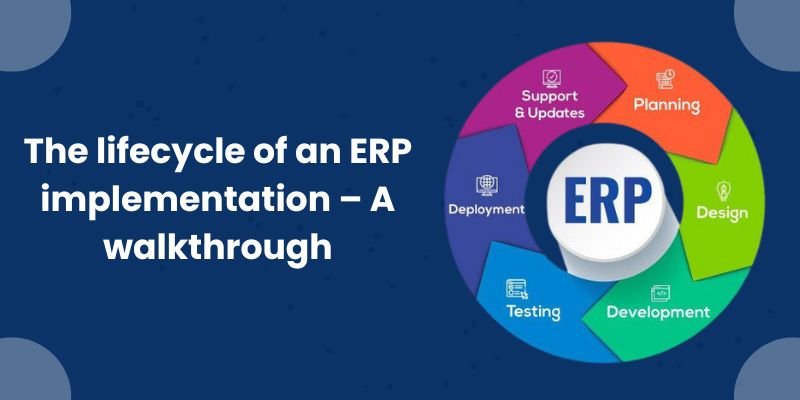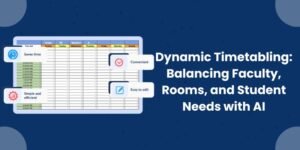Enterprise Resource Planning (ERP) systems are playing a vital role in modernising educational institutions. From automating administrative tasks to improving communication between departments, ERP offers schools and colleges a unified platform that simplifies operations and enhances decision-making.
However, ERP implementation isn’t an overnight process. It follows a structured life cycle that involves careful planning, collaboration, and continued support. Understanding this lifecycle helps educational leaders make informed decisions, set realistic expectations, and ensure a smooth digital transformation journey.
In this blog post, we walk through the complete lifecycle of ERP implementation in an educational setting—from identifying the need to long-term usage and evaluation.
1. Discovery and Needs Assessment
The ERP journey begins with identifying why change is necessary. Schools must understand their current challenges and define what they want the ERP system to achieve. This may involve improving fee tracking, streamlining admissions, or making performance reports easier to generate.
Leaders and administrators meet to evaluate existing workflows—whether they use manual ledgers, spreadsheets, or legacy software. At this stage, the institution also outlines broad goals for the ERP project and identifies key stakeholders who will be involved throughout the implementation.
This stage sets the foundation. Without a thorough needs assessment, institutions risk choosing a system that doesn’t align with their long-term objectives.
This step is critical in the overall ERP implementation for schools and serves as the first move towards digital transformation in education.
2. Vendor Evaluation and Selection
Once the institution knows what it needs, the next step is selecting an ERP vendor. Not all ERP systems are designed with educational contexts in mind. It’s crucial to find a provider who understands the nuances of school operations—academic cycles, compliance requirements, staff structures, and student life.
Schools should look for:
- Core education ERP lifecycle modules (admissions, fees, attendance, exam management, etc.)
- A user-friendly interface for non-technical users
- Scalability and flexibility
- Integration with payment gateways, SMS/email systems, and biometric devices
- Ongoing training and support
Requesting product demos and speaking to other institutions using the system can help narrow down choices. Price is important, but the right partner offers long-term value, not just a low upfront cost.
3. Planning and Scope Finalisation
After finalising the vendor, it’s time to determine what the ERP implementation will look like in practice. This includes:
- Defining the scope of the implementation: Which modules will go live first?
- Setting up a phased timeline
- Allocating responsibilities within the school team
- Outlining key performance indicators (KPIs) to measure success
The institution and ERP provider work together to plan the rollout. Depending on the size of the school or group of institutions, the implementation may be staggered across departments, grades, or campuses.
A dedicated point of contact from the institution helps streamline communication and ensures smooth coordination between teams.
4. Data Migration and System Configuration
One of the most critical (and often time-consuming) steps is transferring historical data into the new system. This includes student records, attendance sheets, fee transactions, and HR data.
Data migration involves:
- Cleaning the data to remove inaccuracies
- Structuring the information to match ERP input formats
- Testing the migration with smaller data sets before full upload
Meanwhile, the ERP provider configures the system based on the institution’s needs. This might include setting access permissions, defining workflows, or customising templates like report cards and ID cards.
Clean, well-organised data ensures that the ERP functions smoothly and avoids errors after going live.
This stage often highlights the complexity of data migration in ERP systems and underscores why expert support is invaluable.
5. Training and Change Management
The most powerful ERP system can fail if users don’t know how to use it. Training is key to successful adoption.
This includes:
- Orientation sessions for different user groups (teachers, office staff, finance teams, etc.)
- Written manuals, FAQs, and recorded tutorials
- Designated support channels for ongoing questions
Change management is also about mindset. Staff members may resist change if they don’t understand the value of the ERP or feel uncertain about their roles. It’s important to listen to concerns, offer reassurance, and highlight how the new system makes their work easier—not redundant.
6. Pilot Testing and Feedback
Before rolling out the system across the entire institution, many schools choose to conduct a pilot phase. This might involve testing with one department, class, or administrative function.
The pilot helps identify:
- Gaps in system configuration
- Areas where additional training is needed
- User feedback on interface, speed, and accessibility
The ERP provider then uses this feedback to make necessary adjustments, ensuring that when the full rollout happens, the system is robust and user-approved.
7. Go Live
The go-live phase marks the official launch of the ERP system across the institution. This stage involves:
- Final data uploads
- Issuing login credentials to users
- Communicating rollout steps clearly to staff, students, and parents
It’s natural for the first few weeks to involve minor issues, such as forgotten passwords or unfamiliarity with features. The vendor typically offers enhanced support during this phase to ensure a smooth transition.
It’s also a great time to celebrate progress—go-live events, success stories, and visible wins help boost morale and reinforce confidence in the new system.
8. Post-Implementation Support
Once the system is in use, ongoing support becomes essential. This includes:
- Bug fixes and software updates
- Technical assistance for users
- Routine maintenance
- Adding new modules or features as institutional needs evolve
Schools should expect continued engagement from their ERP provider, especially in the first year. Quarterly check-ins, usage reports, and helpdesk access ensure that the system remains functional and aligned with goals.
Training should also continue as new staff join or new features are introduced.
This is where school management software transitions from being a solution to a strategic partner.
ERP as a Foundation for the Future
A well-implemented ERP system doesn’t just solve immediate problems—it lays the groundwork for long-term success. With all data and processes unified, institutions are better equipped to handle growth, navigate staff changes, and respond to new challenges with agility.
Importantly, the ERP becomes an institutional memory—retaining records, relationships, and insights even as people come and go.
Digital transformation in education is a journey, and understanding the lifecycle of ERP implementation ensures that each step is taken with clarity and purpose.












